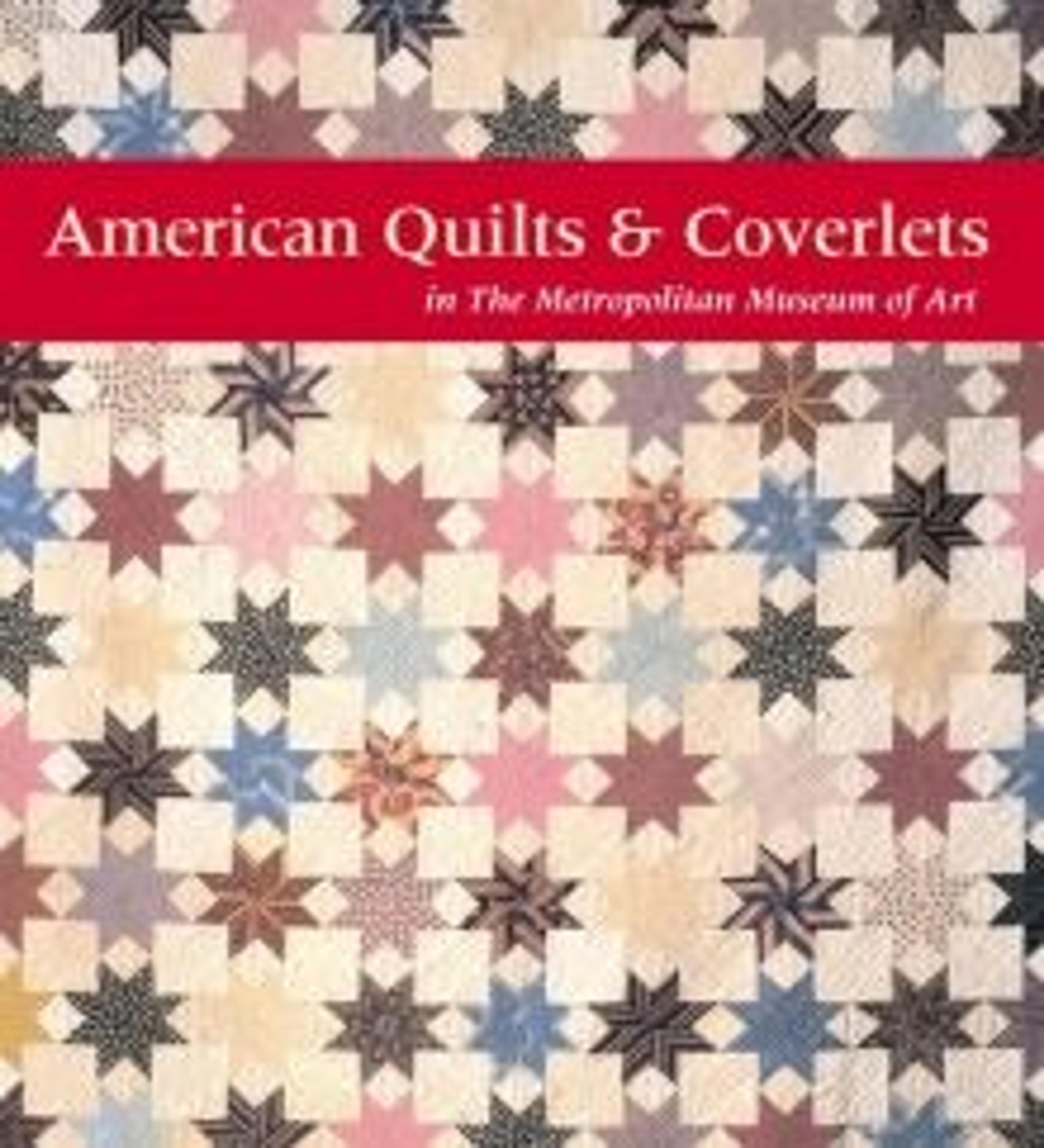Doll Quilt, Chimney Sweep pattern
In the January 1835 issue of Godey’s Lady’s Book, it was suggested that "little girls often find amusement in making patchwork quilts for the beds of their dolls, and some even go so far as to make cradle-quilts for their infant brothers and sisters." As "Godey’s" notes, very young girls were encouraged to attempt patchwork for much the same reason they learned to make embroidered samplers: This type of project taught them the basic needlework skills they would need to run their own homes competently when they reached adulthood. The majority of nineteenth-century women made all their family’s clothes and linens, many without the benefit of a sewing machine; therefore, it was never too early to teach a girl how to stitch a straight, secure seam. By sewing a patchwork quilt for her doll, a little girl learned the running stitch, the backstitch, and also probably the hemstitch, which she might use to finish the quilt’s edges. Catharine Beecher and Harriet Beecher Stowe, in their well-respected book, The American Woman’s Home, suggested the following method of teaching a young girl to sew:
"When a young girl begins to sew, her mother can promise her a small bed and pillow, as soon as she has sewed a patch quilt for them; and then a bedstead, as soon as she has sewed the sheets and cases for pillows; and then a large doll to dress, as soon as she has made under-garments; and thus go on till the whole contents of the baby-house are earned by the needle and the skill of its little owner. Thus the task of learning to sew will become a pleasure; and every new toy will be earned by useful exertion."
Learning to sew was probably not always such a pleasure, given that a child sometimes had to complete a prescribed amount of daily sewing, often called her "stint," before she was allowed to play. The inscription written in ink on the back of our Chimney Sweep patterned doll quilt reads: "ELLA Mygatt Whittlesey/AGED SEVEN. Her "stint"/taught by her Grandmother Elinor Stuart. / 1852." It is likely that the young maker was obliged to finish a Chimney Sweep block each day before she went on to other, perhaps more recreational, activities. Making her quilt required quite a lot of hand sewing for a little girl of seven, and it may have taken her several weeks to do it all. After the pieced blocks were completed, she attached them to the plain blocks, then the quilt was filled, backed, quilted, and the edges bound.
"When a young girl begins to sew, her mother can promise her a small bed and pillow, as soon as she has sewed a patch quilt for them; and then a bedstead, as soon as she has sewed the sheets and cases for pillows; and then a large doll to dress, as soon as she has made under-garments; and thus go on till the whole contents of the baby-house are earned by the needle and the skill of its little owner. Thus the task of learning to sew will become a pleasure; and every new toy will be earned by useful exertion."
Learning to sew was probably not always such a pleasure, given that a child sometimes had to complete a prescribed amount of daily sewing, often called her "stint," before she was allowed to play. The inscription written in ink on the back of our Chimney Sweep patterned doll quilt reads: "ELLA Mygatt Whittlesey/AGED SEVEN. Her "stint"/taught by her Grandmother Elinor Stuart. / 1852." It is likely that the young maker was obliged to finish a Chimney Sweep block each day before she went on to other, perhaps more recreational, activities. Making her quilt required quite a lot of hand sewing for a little girl of seven, and it may have taken her several weeks to do it all. After the pieced blocks were completed, she attached them to the plain blocks, then the quilt was filled, backed, quilted, and the edges bound.
Artwork Details
- Title:Doll Quilt, Chimney Sweep pattern
- Maker:Ella Mygatt Whittlesey (born ca. 1845)
- Date:1852
- Geography:Made in United States
- Culture:American
- Medium:Cotton
- Dimensions:26 x 24 3/4 in. (66 x 62.9 cm)
- Credit Line:Gift, Mrs. Roger Brunschwig Fund, 1988
- Object Number:1988.213
- Curatorial Department: The American Wing
More Artwork
Research Resources
The Met provides unparalleled resources for research and welcomes an international community of students and scholars. The Met's Open Access API is where creators and researchers can connect to the The Met collection. Open Access data and public domain images are available for unrestricted commercial and noncommercial use without permission or fee.
To request images under copyright and other restrictions, please use this Image Request form.
Feedback
We continue to research and examine historical and cultural context for objects in The Met collection. If you have comments or questions about this object record, please contact us using the form below. The Museum looks forward to receiving your comments.
